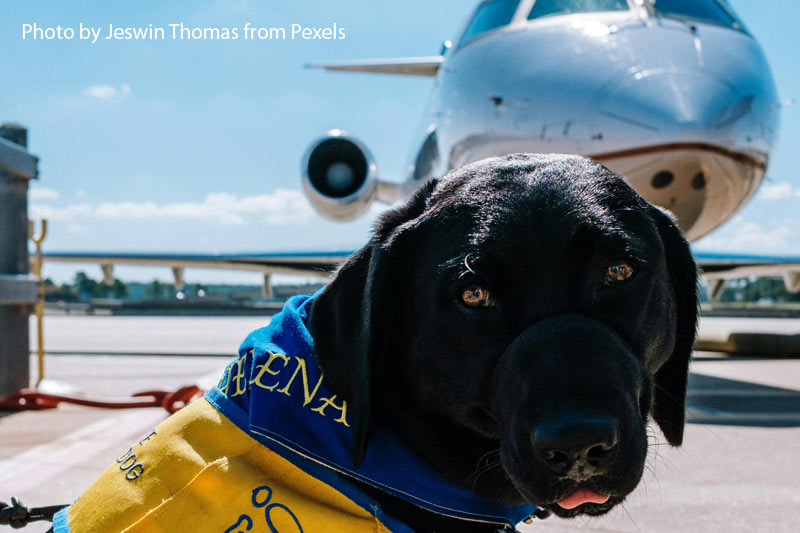International Dog Transportation Requirements
Changes for Dogs Entering the U.S. to Begin Soon
As our world becomes increasingly interconnected, it’s no surprise that the rules and regulations surrounding international travel are constantly evolving. And that includes the process of bringing your beloved furry companion along for the journey. The U.S. Centers for Disease Control and Prevention (CDC) has new regulations effective August 1st, 2024.
These changes, while intended to improve the safety and well-being of our four-legged friends, may also have a significant impact on the logistics and cost of bringing a dog into the country. In this rapidly changing landscape, it’s important for pet owners to stay informed and prepared.
Keep reading for a breakdown of these changes and what they mean for dogs entering the US.
Understanding Dog Transportation Requirements
Navigating the intricate web of customs regulations is a fundamental aspect of successful international shipping & travel. Customs rules and requirements, including animal transport, vary from country to country, making it crucial for individuals and corporations to stay informed and compliant. Working with a knowledgeable customs broker who specializes in international trade regulations can provide invaluable assistance. These experts are well-versed in the ever-changing customs requirements and can ensure that all documentation, including commercial invoices, bills of lading, packing lists, and import forms, is accurately completed.
New Regulations for Dogs Entering the United States
Preparing dog owners for the new regulations for dogs entering the United States is essential to ensure a smooth and hassle-free entry process. These regulations are designed to protect public health and ensure the safety and well-being of the animals. Here are the key requirements dog owners need to be aware of:
- Health Check: Upon arrival in the United States, dogs must appear healthy. This means that any signs of illness, such as coughing, sneezing, or visible distress, could result in further inspection or quarantine. To prepare, ensure your dog receives a comprehensive health check from a veterinarian before travel. Obtain a health certificate indicating that your dog is free from contagious diseases and fit to travel. This document should be issued close to your departure date to ensure it reflects your dog’s current health status.
- Age Requirement: Dogs must be at least six months old to enter the United States. This regulation helps prevent the spread of diseases and ensures that young puppies, who are more vulnerable, are not subjected to the stresses of travel. If you have a puppy, plan your travel accordingly, ensuring they meet the age requirement at the time of entry. Be prepared to provide proof of your dog’s age, such as veterinary records or an official birth certificate.
- Microchip: All dogs must be microchipped before entering the United States. A microchip is a permanent form of identification that helps reunite lost pets with their owners and verifies the dog’s identity. Ensure the microchip is ISO-compliant, as this is the standard accepted in the U.S. After microchipping, register your dog’s microchip number with your contact information in a pet recovery database. This step is crucial for your dog’s safety and your peace of mind.
- CDC Dog Import Form: An online submission receipt of the CDC Dog Import Form must accompany your dog. This form collects information about the dog’s health, vaccination status, and travel history. Complete the form well in advance of your travel date and keep the submission receipt handy. The form is available on the Centers for Disease Control and Prevention (CDC) website. Having this form filled out and the receipt accessible will streamline your entry process and demonstrate compliance with the new regulations.
In summary, to comply with the new regulations for dogs entering the United States, ensure your dog is healthy, at least six months old, microchipped, and accompanied by the CDC Dog Import Form submission receipt. Proper preparation and adherence to these guidelines will help ensure a smooth entry process and safeguard the health and well-being of your dog and the public.
What to Look for When Transporting Your Pets Across Borders
Transporting pets across borders requires careful planning and adherence to regulations to ensure a smooth and safe journey for your furry friends. Here’s what to consider:
Health Requirements: Research the destination country’s health requirements. This often includes vaccinations, such as rabies, and a recent health certificate from a licensed veterinarian. Some countries may also require blood tests or specific treatments.
Documentation: Ensure all necessary documentation, including pet passports, microchip information, and import permits, is in order. Double-check the expiration dates and validity of these documents.
Quarantine Regulations: Understand the quarantine regulations of the destination country. Some countries require pets to undergo a quarantine period upon arrival, which can vary in length.
Comfort and Safety: Invest in a sturdy, airline-approved pet carrier. Ensure your pet is comfortable, has access to water, and is accustomed to the carrier before the trip.
Climate Considerations: Consider the climate of the destination and the season of travel. Extreme temperatures can affect your pet’s comfort and health during transit.
Professional Help: Consider hiring a pet relocation service to handle logistics and ensure compliance with all regulations.
By paying attention to these details, you can help ensure a safe and stress-free journey for your pet.
Transport Your Doggy With Ease
In conclusion, the changes for dogs entering the US are a step towards creating a safer country for both humans and animals. As pet owners, it is our responsibility to ensure that our furry companions follow these rules and regulations. Let’s work together to make this transition smoother and advocate for the well-being of all dogs. Don’t forget to stay updated and plan accordingly for your next trip with your furry friend!
If you want to know more about dog transportation requirements, visit our blog today.

